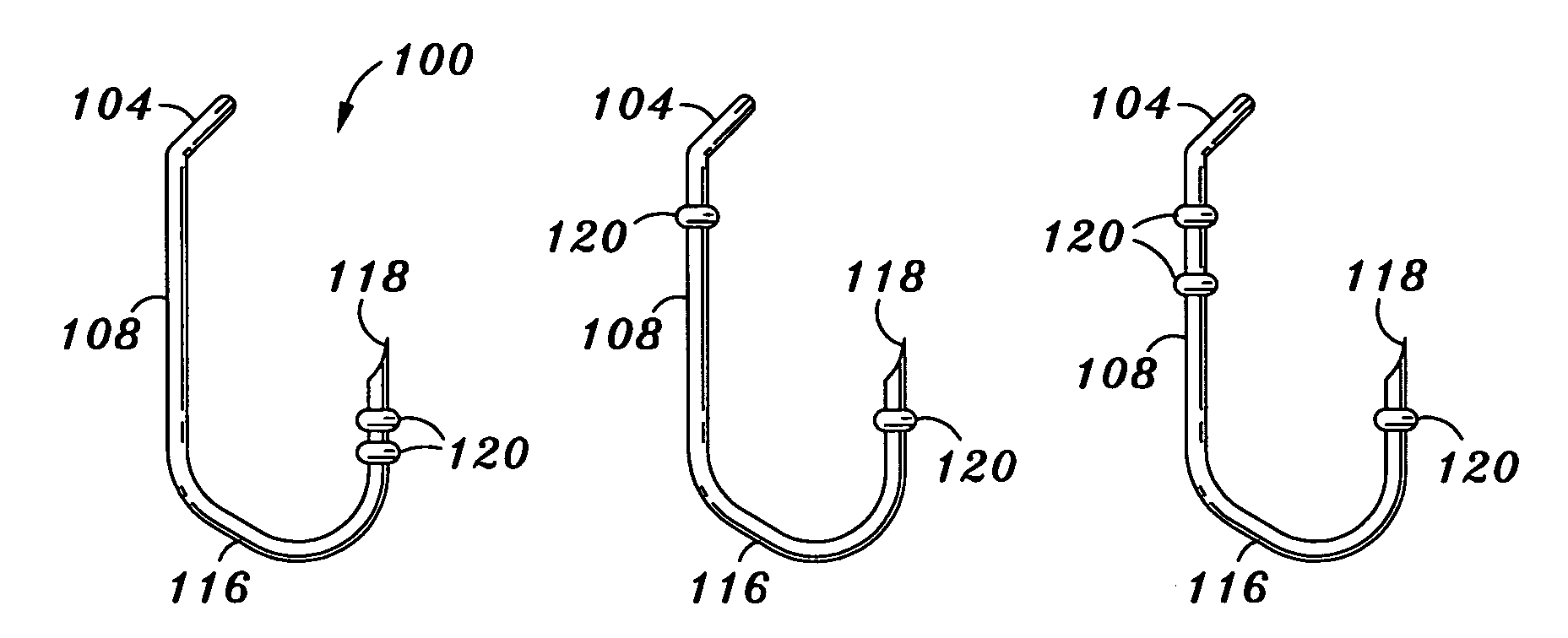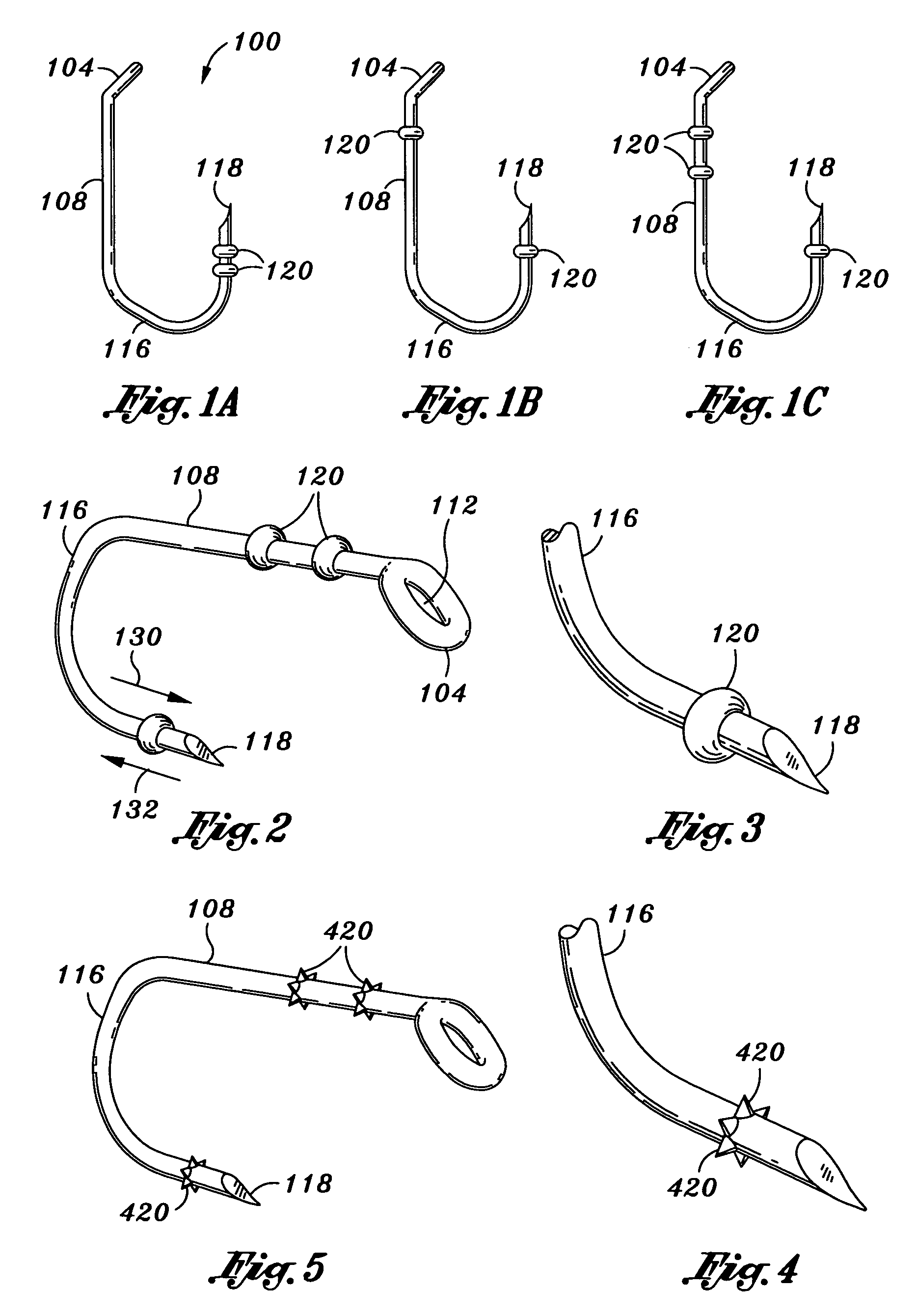Modified fishhook for catch and release applications
a technology for fishhooks and catch and release, applied in the field of fishhooks, can solve the problems of permanent harm of fish, potent infection, and potentially interfering with fish's normal feeding habits, and achieve the effect of minimal damage or harm, not unduly damaged or harm
- Summary
- Abstract
- Description
- Claims
- Application Information
AI Technical Summary
Benefits of technology
Problems solved by technology
Method used
Image
Examples
Embodiment Construction
[0024]FIGS. 1A, 1B, and 1C, FIG. 2 and FIG. 3 illustrate side pan views and perspective views of an exemplary fishhook 100 configured according to the method and apparatus disclosed herein. As shown, a fishhook comprises an eye 104 at a first connected or formed from a shank 108. In this exemplary embodiment the eye 104 forms an opening 112 configured to accept a fishing line, in the case of direct tied hook, a swivel, or other device or element that serves as an interface between the hook and the fishing line or leader. The eye 104 and its associated method of manufacture, assembly, location, composition, and the like may comprise any eye configuration known in the art or developed in the future. The eye 104 is generally understood by one of ordinary skill in the art of fishhooks and as such the eye is not described in detail herein.
[0025]The shank 108 comprises a generally straight or curved section that separates the eye 104 from a curved portion referred to herein as a bend 116....
PUM
 Login to View More
Login to View More Abstract
Description
Claims
Application Information
 Login to View More
Login to View More - R&D
- Intellectual Property
- Life Sciences
- Materials
- Tech Scout
- Unparalleled Data Quality
- Higher Quality Content
- 60% Fewer Hallucinations
Browse by: Latest US Patents, China's latest patents, Technical Efficacy Thesaurus, Application Domain, Technology Topic, Popular Technical Reports.
© 2025 PatSnap. All rights reserved.Legal|Privacy policy|Modern Slavery Act Transparency Statement|Sitemap|About US| Contact US: help@patsnap.com



